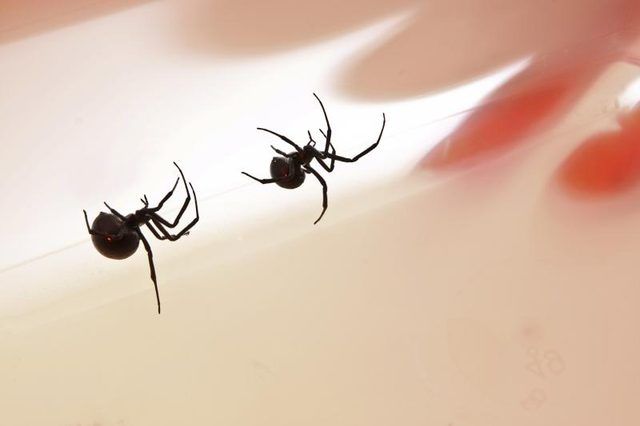Bulbs
Flower Basics
Flower Beds & Specialty Gardens
Flower Garden
Garden Furniture
Garden Gnomes
Garden Seeds
Garden Sheds
Garden Statues
Garden Tools & Supplies
Gardening Basics
Green & Organic
Groundcovers & Vines
Growing Annuals
Growing Basil
Growing Beans
Growing Berries
Growing Blueberries
Growing Cactus
Growing Corn
Growing Cotton
Growing Edibles
Growing Flowers
Growing Garlic
Growing Grapes
Growing Grass
Growing Herbs
Growing Jasmine
Growing Mint
Growing Mushrooms
Orchids
Growing Peanuts
Growing Perennials
Growing Plants
Growing Rosemary
Growing Roses
Growing Strawberries
Growing Sunflowers
Growing Thyme
Growing Tomatoes
Growing Tulips
Growing Vegetables
Herb Basics
Herb Garden
Indoor Growing
Landscaping Basics
Landscaping Patios
Landscaping Plants
Landscaping Shrubs
Landscaping Trees
Landscaping Walks & Pathways
Lawn Basics
Lawn Maintenance
Lawn Mowers
Lawn Ornaments
Lawn Planting
Lawn Tools
Outdoor Growing
Overall Landscape Planning
Pests, Weeds & Problems
Plant Basics
Rock Garden
Rose Garden
Shrubs
Soil
Specialty Gardens
Trees
Vegetable Garden
Yard Maintenance
What Kind of Spiders Are Poisonous in Arizona?
What Kind of Spiders Are Poisonous in Arizona?. Arizona, like the rest of the U.S., is home to innumerable species of spiders. Types of Arizona spiders include large tarantulas to small, inconspicuous web spinners. Of all the spiders in the state, only two types of spiders are considered dangerous or medically significant: black widow spiders and...
Arizona, like the rest of the U.S., is home to innumerable species of spiders. Types of Arizona spiders include large tarantulas to small, inconspicuous web spinners. Of all the spiders in the state, only two types of spiders are considered dangerous or medically significant: black widow spiders and brown spiders. Some people may be sensitive to the bites of other types of spiders, although this is rare.

Although several species of black widows live in the United States, Arizona has seen an increase in the population of the western black widow (Latrodectus hesperus).
The female black widow has a description many are familiar with: a shiny, black, globular body with red hourglass markings on the abdomen. Females reach approximately 1 1/2 inches with their legs extended. She spins irregular webs in protected areas; in urban areas, ideal web locations include in outbuildings, around spigots, under stairs and other protected areas near the ground. In arid, desert locations, ideal web locations occur nearly everywhere as small rock crevices provide protected hideaways.
The brown spiders (Loxoceles spp.) are sometimes called recluse spiders, fiddlebacks or violin spiders. Perhaps the most well-known of the brown spiders, and the most potentially dangerous, is the brown recluse (Loxoceles reclusa). While the state is not home to established populations of brown recluses, Arizona has established populations of five native recluse spiders: Loxoceles arizonica, Loxoceles deserta, Loxoceles apachea, Loxoceles kaiba and Loxoceles sabina.
Most recluse spiders have a dark violin-shaped marking behind the head, although many Arizona species are more uniform in color. These distinctive spiders have six eyes instead of eight, and most grow to 1/3-inch long in body, or approximately 1-inch long including the legs.
True to their colloquial name, recluse spiders prefer to stay hidden and are nocturnal. Most Arizona species prefer to live outdoors in dark, dry places such as scraps of wood or wood piles, dead cacti or rats' nests.
Because the western widow is showing an increase in population in urban areas, it is important to be cautious while gardening. Although shy, widow females are particularly protective of their webs and egg sacs. Always look where you are placing your hands or bare skin to prevent coming in contact with a web. Wear gloves when handling wood or debris outdoors, as many recluse spiders prefer to live in these dark, dry places. Move wood piles away from homes and keep all clothes or similar materials off of floors as recluses will find shelter in them if they manage to make it indoors.
The widows and recluses have very different venom and bites show different symptoms. A widow bite generally feels like a pin-prick if it is felt at all. Following the bite, the bite area will become red and start to swell. The venom is a neurotoxin that affects the nerves. Many people experience intense pain or stiffness, followed by abdominal cramping.
A recluse bite, on the other hand, often goes unnoticed. The bite area may start to sting. Within eight hours of the bite, the bite area will begin to show redness and pain, followed by a dark area forming around the bite. Recluse venom produces a necrotic wound, meaning the tissue begins to die, leaving a crater-like wound.
In the case of a spider bite, clean the bite area with a mild soap and water. Fill a wet cloth with ice and place it over the wound to reduce swelling and pain. Over-the-counter pain relievers can help.
Seek immediate medical care if you are concerned you may have been bitten by one of these dangerous spiders or if you begin to develop symptoms of either of these types of spiders' venom.
If at all possible and safe to do so, capture the spider to send to an arachnologist for proper identification.